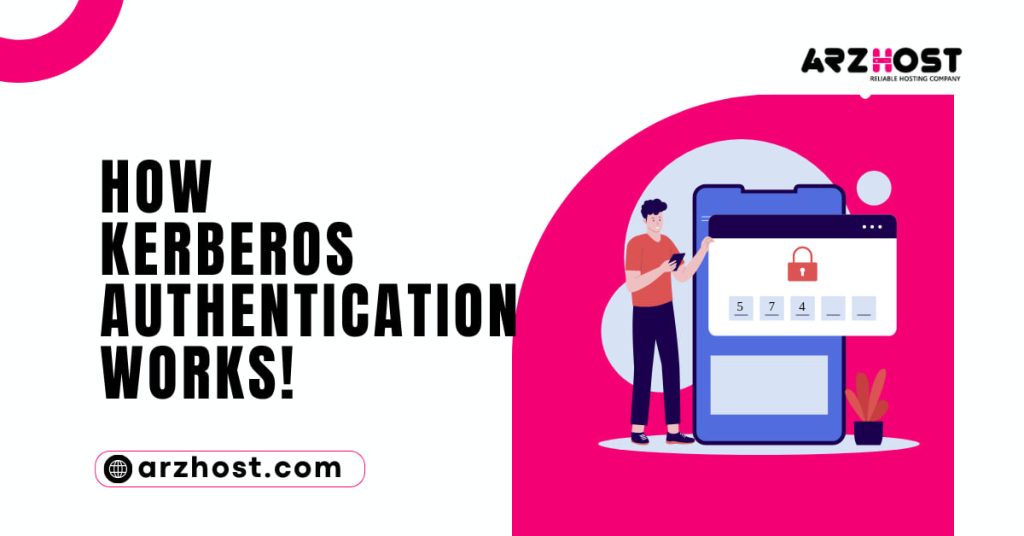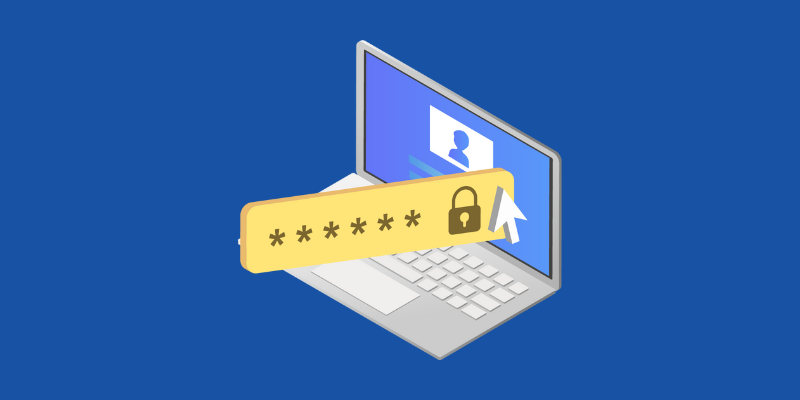Users authenticate their identities in conventional computer systems by entering passwords. This authentication mechanism has a serious issue even though it is simple to set up. How Kerberos Authentication Works? It is simple to assume the identity of the user if hackers manage to acquire or crack the password. When hackers enter in as a legitimate user, the system is vulnerable to attack.
Hackers cannot access user credentials thanks to Kerberos authentication. Passwords are never exposed to unsecured networks thanks to this protocol, not even while users are being verified.
Continue reading to find out what Kerberos authentication is and how it safeguards systems and end users.
What is Kerberos?
For client-server applications, there is an authentication mechanism called Kerberos. In order to securely authenticate user identities, this protocol uses a combination of private key encryption and access tickets.
How Kerberos Authentication Works? The main justifications for implementing Kerberos are:
- Passwords in plain text are never transmitted over an unsecured network.
- There are three levels of authentication for each login.
- All-access codes and tickets are secured by encryption.
- Since authentication is mutual, scams cannot target either users or service providers.
In the late 1980s, MIT created the first Kerberos implementations. The procedure was given the name Cerberus in honor of the mythical Greek beast. A vicious three-headed hound named Cerberus defended Hades.
Microsoft released a more streamlined version of Kerberos as a component of Windows 2000. Since that time, Windows’ standard authorization mechanism has been Kerberos. There are Kerberos implementations for Apple OS, FreeBSD, UNIX, and Linux as well. The protocol is handled as an open-source project by the Kerberos Consortium.
Three Primary Kerberos Components
A Key Distribution Center is involved in each Kerberos verification (KDC). Operating from the Kerberos server, the KDC serves as a trustworthy third-party authentication service. KDC is made up of three primary parts:
- When a user requests access to a service, the authentication server (AS) handles the initial authentication.
- a server that grants tickets (TGS) A user is connected to the service server by this server (SS).
- A Kerberos database maintains the usernames and passwords of authenticated users.
In Kerberos realms, all Kerberos authentications take place. A realm is a collection of systems that a KDC may utilize to verify users and services.
How Kerberos Authentication Works?
How Kerberos Authentication Works? Users never directly authenticate to the service while using Kerberos. Instead, they pass through a sequence of actions carried out by various Key Distribution Center departments.
1: The AS uses decryption to verify users.
The user requests access to a service through the Authentication Server to initiate the Kerberos protocol. The user’s password is a secret key to encrypt this request partly. The user and the AS both share the password’s confidentiality.
If the user encrypts the communication with the correct password, the AS can only decrypt the request. The AS cannot understand the request if the password is incorrect. In that situation, the authentication process is unsuccessful since AS failed to verify the user.
The AS constructs a ticket-granting ticket (TGT) and encrypts it with the TGS’s secret key after decrypting the request. Between the AS and the Ticket Granting Server, this key is a shared secret.
A TGT includes the client’s IP address, a client/TGS session key, and an expiration date. The IP address prevents man-in-the-middle attacks. The AS sends a TGT to the user after issuing one.
2: Users Are Connected to Service Servers by The TGS
The TGT is sent to the TGS by the user. The TGS issues a service ticket if the ticket is legitimate and the user is authorized to use the service.
The client ID, client network address, validity period, and client/server session key are all included in a service ticket. A secret key that is exchanged with the service server is used to encrypt the service ticket.
The user then transmits the service request and the ticket to the service server. Access to the requested resources is granted after the SS decrypts the key.
3: Verification Without Passwords in Plain Text
No plain text password ever reaches the KDC or the service server during the whole verification procedure. All three sets of temporary private keys are secured via encryption.
Both symmetric and asymmetric (public-key) cryptography are supported by Kerberos. The protocol is capable of multi-factor authentication as well (MFA).
Steps for Kerberos Authentication
Kerberos authentication involves several steps. Say a user wants to read a document from a network file server. How Kerberos Authentication Works? The actions needed to authenticate using Kerberos are listed below:
Step 1: The User Sends a Request to the AS
The Authentication Server receives an encrypted request from the user. When the AS receives the request, it uses the user ID to search the Kerberos database for the password.
The AS decrypts the request if the user entered the right password.
Step 2: The AS Issues a TGT
The AS replies with a Ticket Granting Ticket after confirming the user.
Step 3: The User Sends a Request to the TGS
The TGT is transmitted by the user to the ticket-granting server. The user provides the TGT and an explanation of why they are visiting the file server.
Using the secret key shared with the AS, the TGS decrypts the ticket.
Step 4: TGS Issues a Service Ticket
The TGS sends the user a service ticket if the TGT is legitimate.
Step 5: The User Contacts the File Server with the Service Ticket
The service ticket is sent from the client to the file server. Using the secret key that was shared with TGS, the file server decrypts the ticket.
Step 6: The User Opens the Document
The file server permits the user to access the document if the secret keys match. The length of the user’s access to the record is determined by the service ticket.
The user must repeat the complete Kerberos authentication protocol when their access expires.
Advantages Kerberos Authentication
How Kerberos Authentication Works? The principal advantages of using Kerberos are as follows:
1: Enhanced Security
One of the most secure verification protocols in the market is Kerberos, which combines cryptography, multiple secret keys, and third-party authorization.
Passwords for users are never transmitted over the network. Encrypted secret keys are transmitted through the system. It is difficult to gather enough information to pass for a user or the service if someone is recording talks.
2: Access Control
An essential part of today’s businesses is Kerberos. Access control is quite good because to the protocol.
The business gains a single point with Kerberos for enforcing security regulations and monitoring logins.
3: Inter-Party Authentication
Users and service systems can authenticate one another thanks to Kerberos. Both the user and the server systems are aware that they are dealing with genuine counterparts at every stage of the authentication procedure.
4: Lifetime Limited Ticket
In the Kerberos model, each ticket has a timestamp and lifetime information. The length of the users’ authentication is under the admins’ control.
Short ticket lifetimes are excellent for thwarting replay and brute-force assaults.
5: Scalability
Apple, Microsoft, and Sun are just a few of the tech titans that have used Kerberos authentication. The widespread adoption among businesses says a lot about Kerberos’ capacity to meet the needs of major corporations.
6: Multiple Use Authentications
Reusable and reliable Kerberos authentications are available. The Kerberos system only requires the user to verify once. The user can log in to network services for the duration of the ticket without having to submit their personal information again.
How Kerberos Authentication Works? The direct user benefit of Kerberos is single sign-on.
7: Updates and speedy fixes
Top programmers and security specialists have attempted to crack Kerberos over the years. This examination makes sure that any new protocol flaws are swiftly identified and fixed.












